Each year, the ancient festival of Beltane is celebrated.
In recent times, there has been a renewed interest in this festival on an international level.
Discover all about this festival from its ancient origins to its unique rituals.
Learn how you can celebrate Beltane in your own way as well.
This post may contain affiliate links. If you click on one of them, we might receive a small commission (at no extra cost to you). Thanks for your support!
Table of Contents
What is Beltane?
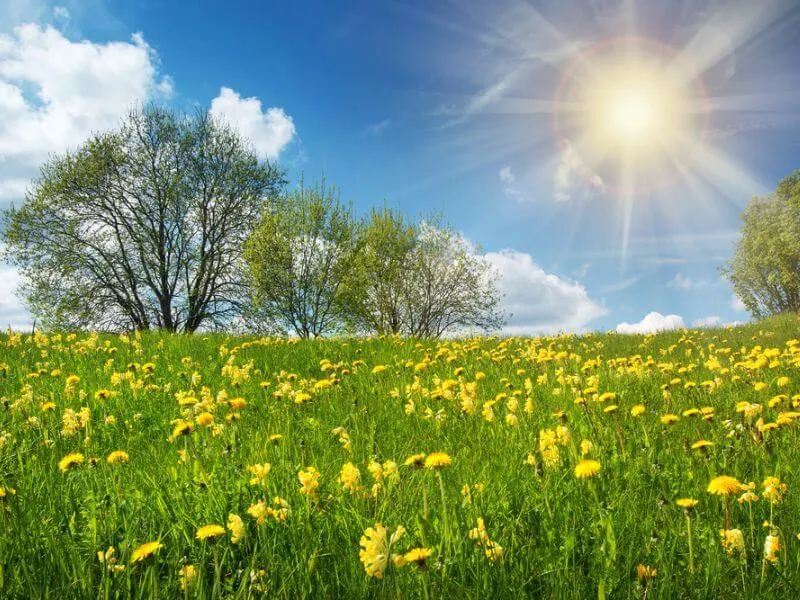
Beltane is a cross quarter festival that can trace its roots back to one of the main pagan holidays of the year.
This tradition evolved at a time when the Gods and Goddesses were believed to influence the daily lives of the people such as the weather, crops, fertility and new life.
There are four Gaelic cross quarter festivals spread across the seasons, the others being:
- Imbolc (Spring Festival associated with the Goddess Brigid on February 1)
- Lughnasadh (Harvest Festival on August 1)
- Samhain (Winter Festival with connections with the dead on November 1)
The Beltane festival marks the changing of the seasons from spring to summer.
Typically it is a time of positivity, growth, fertility and abundance.
Protection from harm, especially from the spirits of the Otherworld feature frequently in the rituals associated with this festival.
Related Articles: Beltane and Celtic Gods and Goddesses
When is Beltane celebrated?
Beltane is celebrated on May 1. Some of the celebrations typically start on the Eve of Beltane (April 30) and last until sundown on May 1.
This marks roughly the halfway point between the Spring Equinox and the Summer solstice.
The exact midpoint is the day when some Neopagans celebrate Beltane.
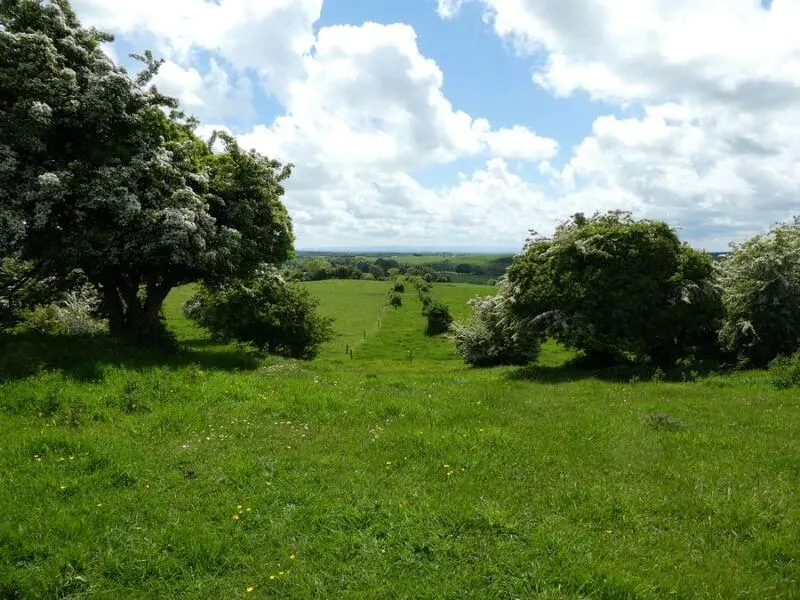
This can vary within a few days of May 1 in the Northern Hemisphere and a few days of November 1 in the Southern Hemisphere.
In some places, the Beltane date coincided with when the cattle were moved to their summer grazing areas.
The first blossoms on the hawthorn were also occasionally used to determine when the Beltane pagan holiday should start.
What is the origin of Beltane?
Summer was, and continues to be, the most important period in the agricultural year.
Beltane developed as a celebration for this vitally important season.
It involved rituals of protection to ensure a fertile year with a good harvest.
The oldest known reference to Beltane was written in the ancient Irish texts Sanas Cormaic or Cormac’s Glossary.
This text dates back to the 10th century.
Cormac, who was a Bishop of Cashel suggested that the meaning of Beltane may have come from the Irish word for fire, which is tine.
Beltane God and Beltane Goddess
The Celtic God Belenos, or Belenus in Irish, may have also been somewhat connected to this festival.
He is sometimes referred to as Bel, the “Bright One”, and may have contributed to the Beltane meaning.
It is difficult to find clear connections to a Beltane Goddess.
There is a lot of information and different Goddesses mentioned online and elsewhere, but it is challenging to find reliable evidence to support this.
Feel free to drop us a line, if you have more information about deities linked to Beltane.
Where did Beltane Originate?
It is widely known that Beltane was celebrated in Ireland, Scotland and the Isle of Man.
Some aspects of the festival, such as the welcoming of the summer can also be seen in other traditional May Day celebrations.
These take place throughout Europe around May 1.
Rituals for Beltane
There is a great diversity of Beltane rituals that have evolved over time.
Many are particularly old, especially those with connections to fire.
Down through the ages, some other influences have helped to shape and transform the rituals.
In the 18th and 19th century, in particular, a greater influence from Christianity crept into this originally pagan fire festival.
The month of May, which is known as Bealtaine in Irish (Bealltuinn in old Scottish Gaelic), became more associated with the Virgin Mary.
For example, while once a child May Queen led the May Day procession, this became a status of the Virgin Mary in some places in Ireland in more recent history.
Beltane Fire
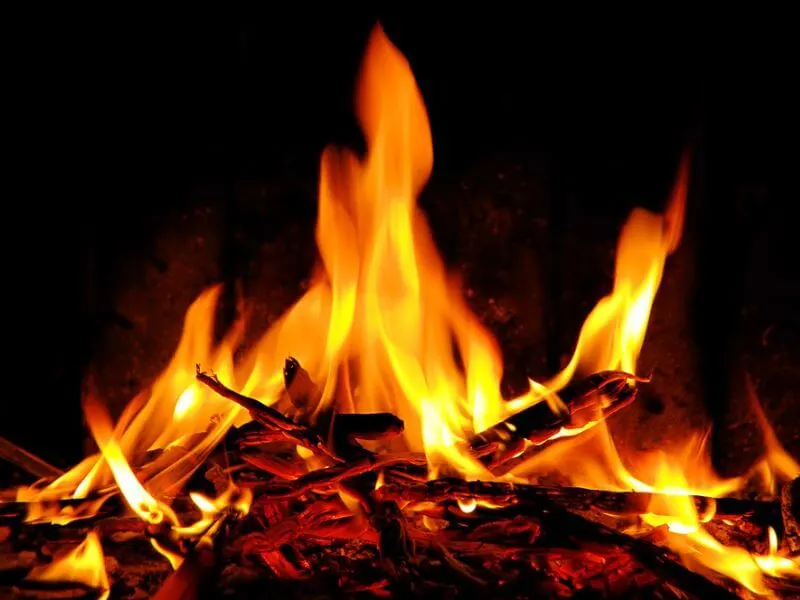
Fire is an integral part of the Beltane pagan festival, as well as the other cross quarter or fire festivals as they are also known.
It was believed to have symbolic meaning, help ward off harm and was connected with the changing of the seasons.
In the Northern Hemisphere, Beltane marks the beginning of summer.
This is a time associated with the sun, more sunlight, longer days and better weather.
Fire was used to help represent these changes.
Typically large bonfires were lit on the eve of Beltane (April 30).
Prominent locations such as hiltops were usually selected for such fires.
In ancient times, the fires in the houses would have been extinguished and lit using the sacred flame from the main Beltane fire.
Other traditions for around the Beltane fire also developed.
For example, it was thought to be bad luck to light a fire in your home until you saw smoke rising from the chimney of your neighbor first.
The ashes from the Beltane fire would also be used as a form of protection.
These blessed Beltane ashes would have been spread on peoples skin or the hides of animals to help ensure that no harm would befall them.
Beltane Bonfires for Cattle
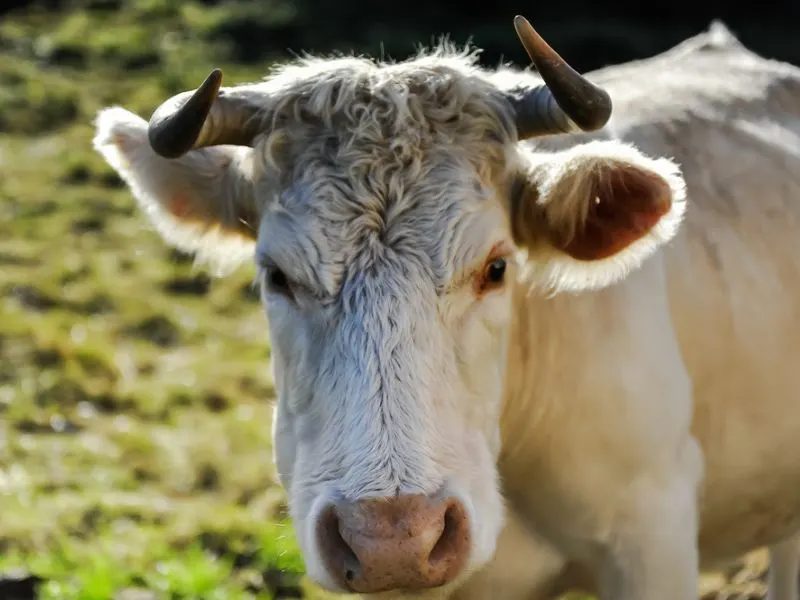
Many of the rituals that developed around the festival of Beltane are deeply connected with the theme of protection.
Cattle were an extremely precious commodity to the pastoral Celtic people.
Around this time of year, cattle were traditionally taken from their winter grazing areas to the summer pastures around this time.
To ensure they were protected from disease and harm, a ritual bonfire ceremony would have been held.
Druids would say special chants as the cattle were driven between two large bonfires.
Variations of this ceremony included the cattle encircling one fire or even being made to jump over the embers in order to be protected from harm.
Older traditions may have involved sacrifices on the fires, but this is not conclusive.
May Tree or May Bush
A long standing tradition associated with celebrating Beltane is the decoration of trees.
Generally, a May Tree or May Bush was a selected tree located close to a house.
In many cases, a branch from a hawthorn tree would have been used, rather than an actual tree or bush.
Hawthorn is a tree surrounded by superstition and it would have usually been considered bad luck to cut a branch from the tree.
Related Article: Trees of Ireland
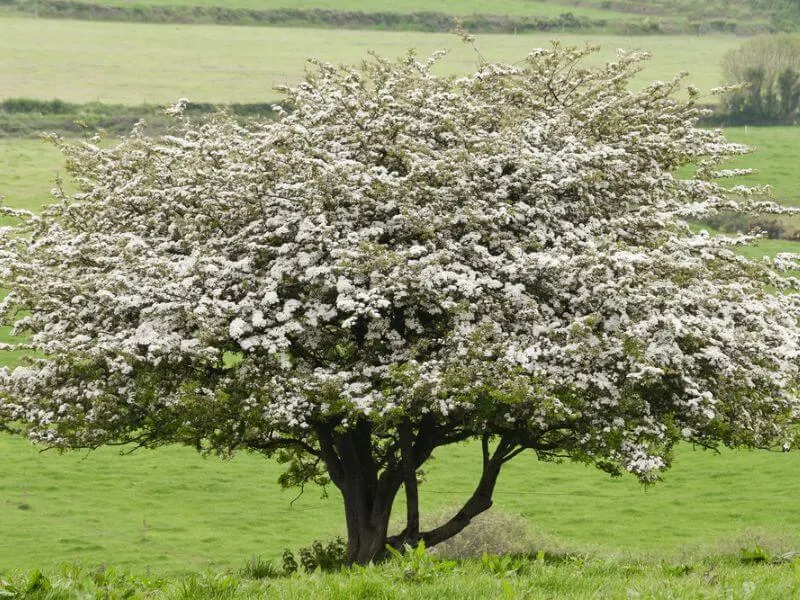
There appears to have been some exceptions around Beltane though.
The decorations on the tree would have been a collection of whatever was available in the home.
Typically this would have been scraps of material, ribbons and flowers.
Other more unusual objects were also used as decorations.
These could have been seashells, the remains of painted eggshells from Easter or even hurling balls, known as sliotars.
(These hard, leather balls are used in the traditional Irish game of Hurling. The hurling season starts again at this time of year.)
In Wexford in Ireland, there has been a recent attempt to try to revive this long standing tradition.
Smaller May Bushes would have been carried from house to house by the local children to celebrate the Beltane day festival.
These would have consisted of a decorated tree branch.
This act was to help bring the summer to all of the houses in the community.
May Bough
Larger decorated trees would have been more centrally located in the town, village or city.
These would have been known as May Boughs and were sometimes paraded through the town as part of a procession.
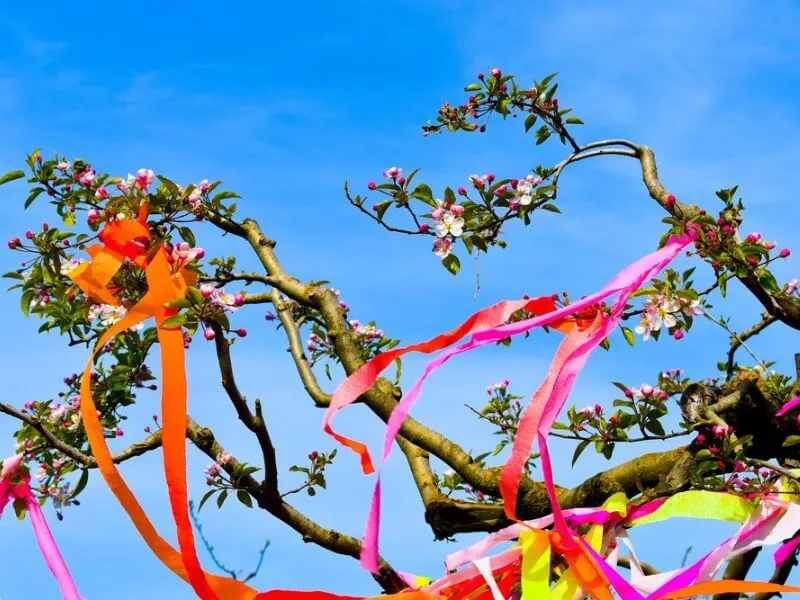
Maypoles
The tradition of the Maypole is common throughout Europe at this time of year.
In some locations in Ireland such as Dublin, Kilkenny and Kildare, Maypoles also existed.
These are more likely a relatively recent introduction to Ireland.
Plantation settlers during the 16th and 17th century may have brought this tradition with them from England and Scotland.
Maypole dances and much merriment took place at these locations.
There is even some evidence to suggest that there may have been competitions to climb Maypoles in some area.
The use of Maypoles to celebrate Beltane May Day is a particularly strong tradition for Wiccans.
This festival is deeply connected with fertility in the Wicca religion.
Gathering of May Flowers
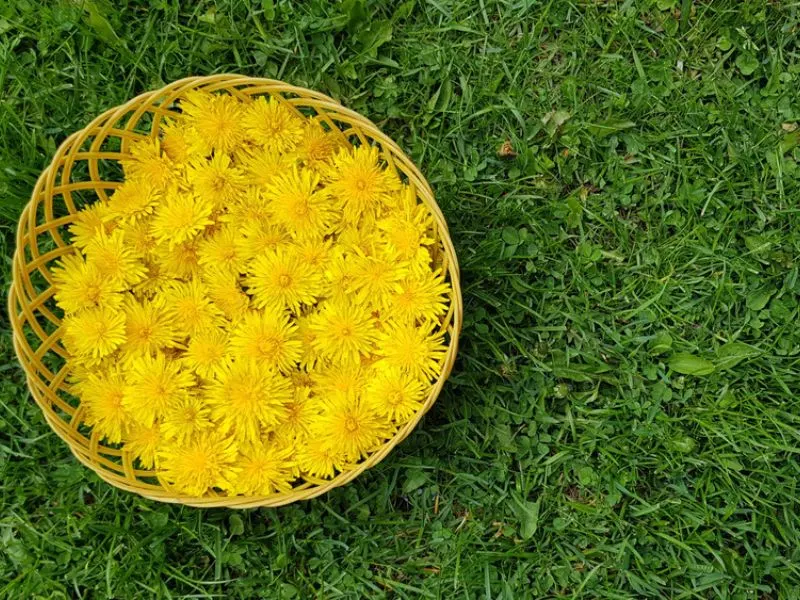
Gathering flowers is an old tradition connected with Beltane.
It is well connected with the idea of growth and abundance at this time of year.
Another idea behind this practice is to ward away the fairies and harm from the Otherworld.
The beginning of summer the fairies, or aos sí, changed to their summer locations and became more likely to be out and get up to mischief.
By decorating the home with flowers, this was thought to protect against any unwanted attention from the fairies.
Children would typically have gathered the yellow, white and blue flowers that typically grow during this season on the eve of Beltane.
These would likely have included marigolds, primroses, daisies and bluebells among other plant species.
Related Article: Wildflowers of Ireland
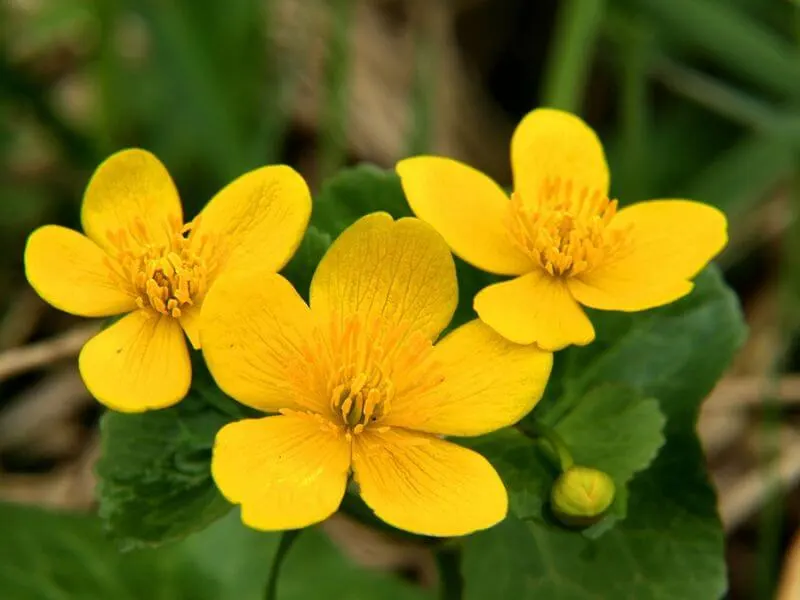
In fact, the Marsh Marigold (Caltha palustris) is known as the Beltane Flower, or May Flower in some areas of Ireland and Scotland. It flowers around this time.
Blossoms would have been spread across the family threshold, left on the windowsills and the entrances to farm buildings.
Children would have also left flowers at the doors and on the windowsills of their neighbors.
The branches of trees, such as Rowan and Hazel, would also have been used to ward off any bad spirits.
Branches would have been placed above the doorway, or sometimes around the boundary of fields with animals and crops.
This was to ensure their protection from the fairy folk.
Beltane was also an important time to gather herbs and healing plants.
Plants, including nettles, collected at this time were thought to be imbued with heightened healing powers and good luck.
Water
As well as fire, water is another vital element of the Beltane festival.
Water collected from the well early on May 1 was thought to be especially potent and could help ward away bad spirits.
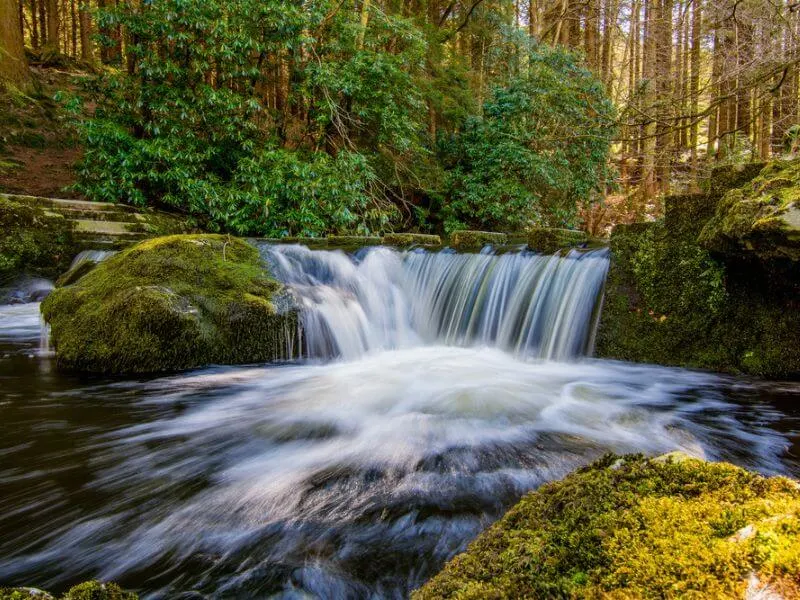
However, it was not considered safe to leave the house during darkness at this time due to the heightened activity of the fairies. (The same precaution applied to the full moon.)
So the water needed to be gathered at first light.
This is why there was a tradition of trying to get the first water from the well on Beltane if the well was shared with a number of families.
Morning Dew
The Beltane spiritual meaning of water is possibly connected with life, fertility and birth.
Interestingly, the fresh morning dew found outside on the morning of Beltane was thought to help preserve eternal youth.
Young women in particular were known for gathering the first dew on this day.
They would rub it to their faces in the hope of enhancing their beauty and looks and perhaps chances of finding love and marrying.
Some tales also tell of men collecting the Beltane dew. It is said to boost their ability to grow beards.
Selecting a May Queen
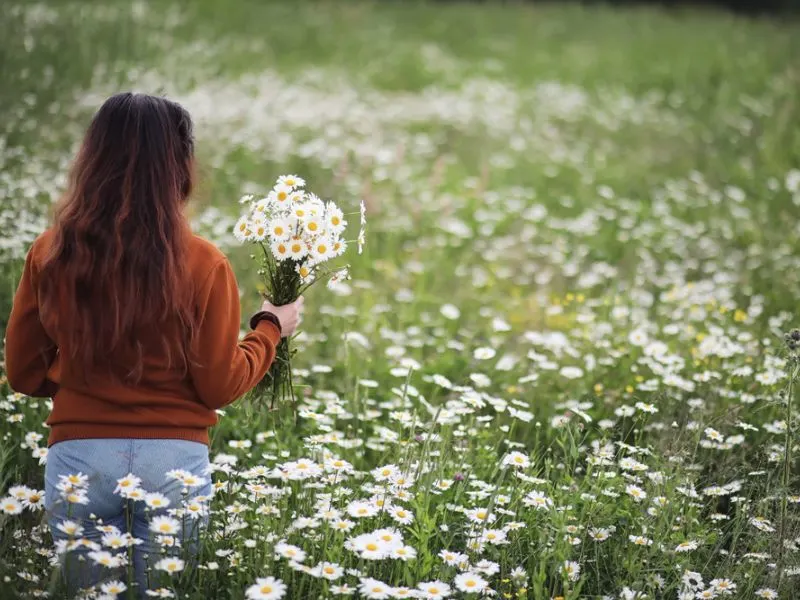
The first of May was the day that a May Queen was selected from the locality.
This May Queen would be a young girl who would signify the innocence and purity associated with this ancient traditional festival.
She would have worn flowers and garlands to mark the occasion.
One role she may have had was to spread flowers and lead a parade through the streets in front of the May Bough procession.
Depending on the location, some May Kings, as well as May Babies were selected for this occasion.
Protecting the Milk and Butter
Milk and butter were thought to be very vulnerable at this time and needed protection from the influence of the fairies or what was known as the “Evil Eye”.
The Evil Eye could probably be best described as feelings of envy or ill wishes from another person.
If they didn’t like you or the situation, they would give you the “Evil Eye” or a particular “look”, that could ruin your dairy produce.
One tradition evolved that it was not allowed to share milk or butter (or coal for that matter) with your neighbors on May Day.
For those that did, they would have to endure a tough year without milk or butter or warmth from the coals of a fire.
Efforts to protect the milk would have included tying straw around the necks of the cattle so that they couldn’t be taken away by the fairies.
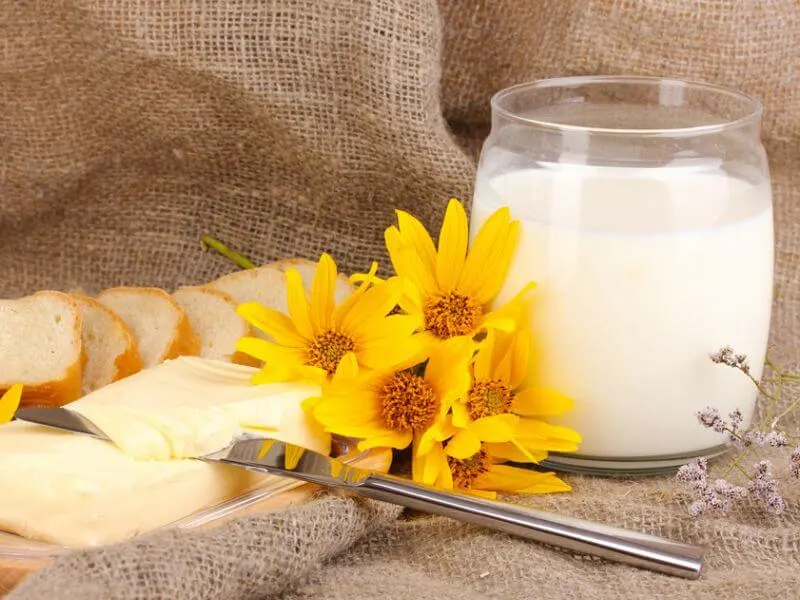
Primroses would also have been tied to the tails of cattle, as they were thought to have a similar deterring effect.
Cattle would also have been taken to fairy forts where blood sacrifices would have been carried out.
This blood may have been burned or spread on the soil in the fairy ring or stone circle.
It is thought that this practice was a Beltane protection ritual or else a Beltane fertility ritual.
Butter should never be made on May Day, as this was thought to bring bad luck.
However, the butter made on the eve of May Day was supposed to be lucky according to some.
Very often butter was shaped with the form of a butter print. These prints came in all sorts of different patterns, often involving animals.
Some of the butter prints were also in the shape of an eye. It is thought that this shape would help protect the butter from any bad influences.
Other objects that were considered lucky, such as horseshoes were also placed in the bottom of the butter churn.
The intended purpose of this was to protect the butter from any harm
How to celebrate Beltane?
There are many different ways to celebrate this changing of the seasons festival.
Depending on the aspects of Beltane that are most important to you, you could choose to include them in your own celebration of this feast.
Related Article: How to celebrate Beltane?
Beltane Blessings

Some ideas include wishing friends and family a Happy Beltane.
There are different Beltane Blessings that are highly suitable for this occasion.
They aim to wish someone goodwill, growth, prosperity and also optimism in the face of the unknown.
This is one of our favorite Beltane Blessings.
May peace and plenty bless your world
with joy that long endures.
May all life’s passing seasons
bring the best to you and yours!
For a wider selection of Beltane Blessings, please read the Beltane Blessings article.
Create an Altar
One of the most simple ways to mark the occasion of Beltane is to create an altar.
This could include some of the Beltane Symbols, such as fire, water, growth in the form of flowers for example.
It can be made in your own home or perhaps outside in a peaceful space that is suitable for quiet reflection.
Beltane candle rituals can be used to replace bonfires, if there is not one taking place in your locality.
Gather Flowers
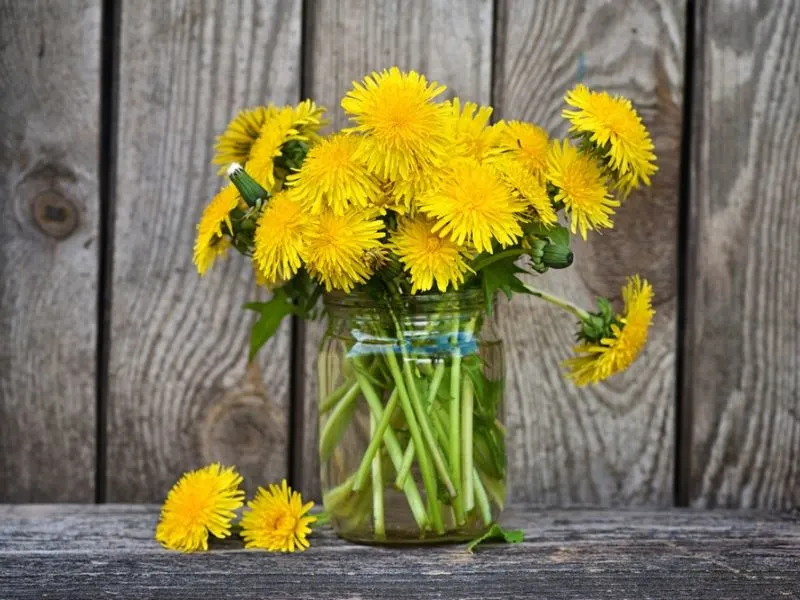
Fresh wild flowers typically grow in abundance at this time of year.
If you have the opportunity to gather some flowers yourself, this can be a nice way to reconnect to nature and the earth at this time of year.
Placing the blossoms on your windowsill or by the main door would be a simple way to celebrate Beltane May Day in your own home.
Perhaps you bring some flowers to a friend, family member or neighbor to share the Beltane celebrations with others.
Many of the Beltane traditions are not very well known.
Feel free to share them with those that might be interested in the origins of this pagan May Day celebration!
It is more fun to take part in the festival when you are not a solitary practitioner!
Decorate the Outside of your House
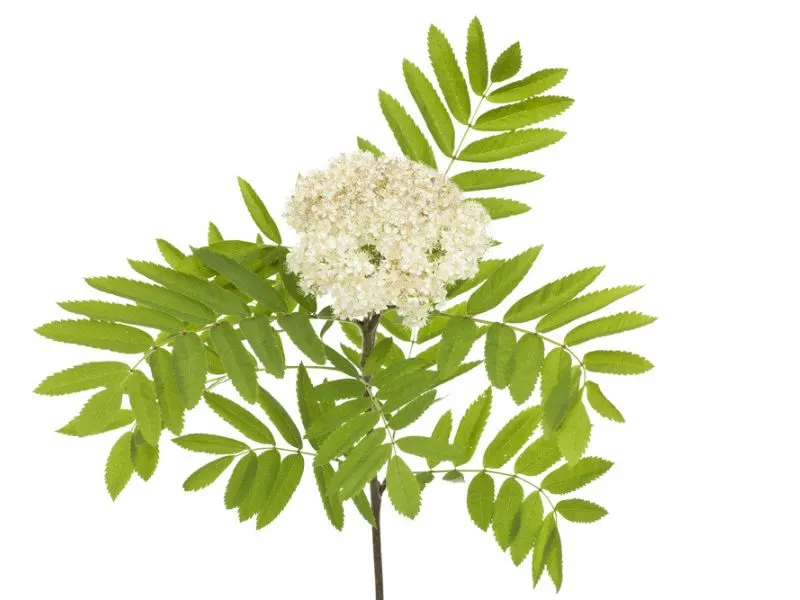
Traditionally, decorating the exterior of a house was also associated with Beltane.
This could be done with flowers typical of the late spring and summer time.
Tree branches would also have been incorporated into the decorations.
The origin of this practice stems from the idea that fairies and magical folk would not cross a boundary with flowers.
Alternatively, the fairies would overlook the house and not wish any harm or bad luck on the family inside.
Are you looking for some more ideas and inspiration about how to mark the occasion of May Day Beltane, including Beltane foods to eat?
Check out the How to celebrate Beltane article.
